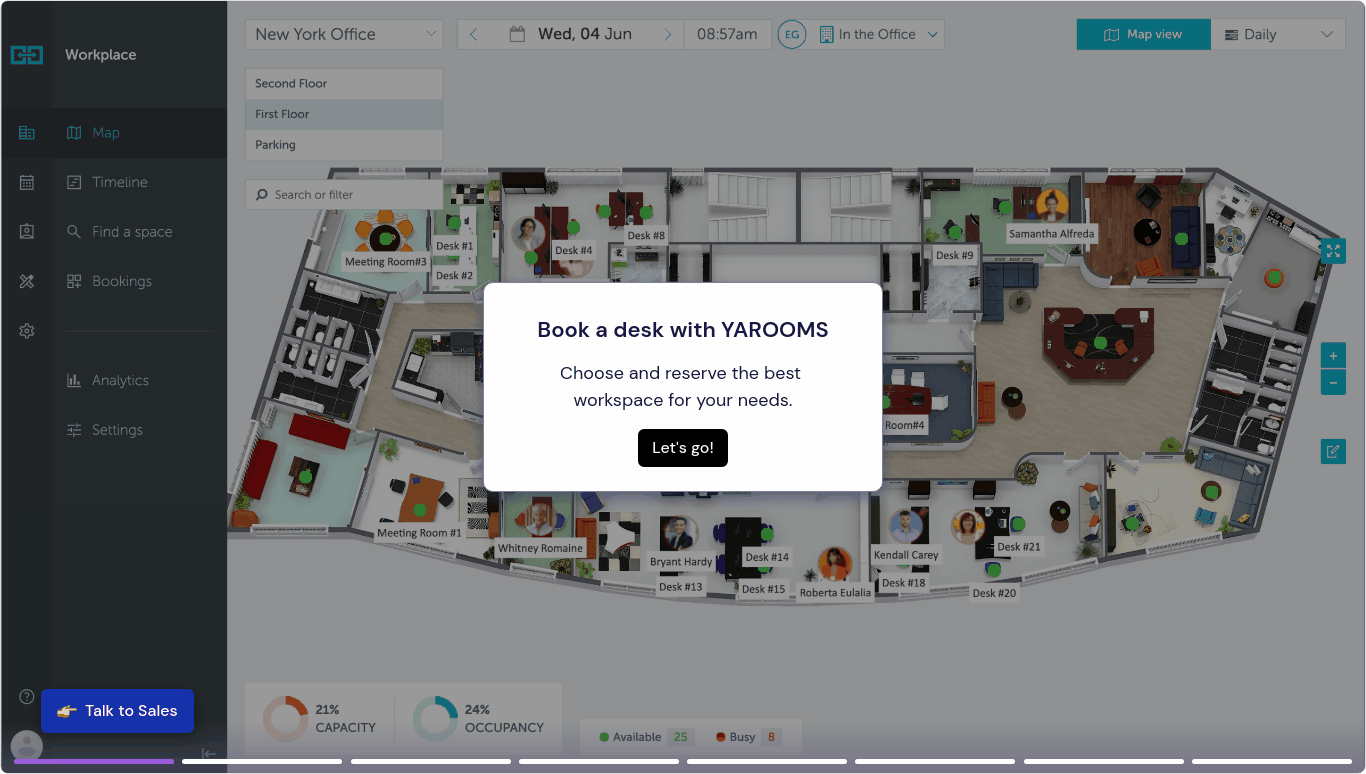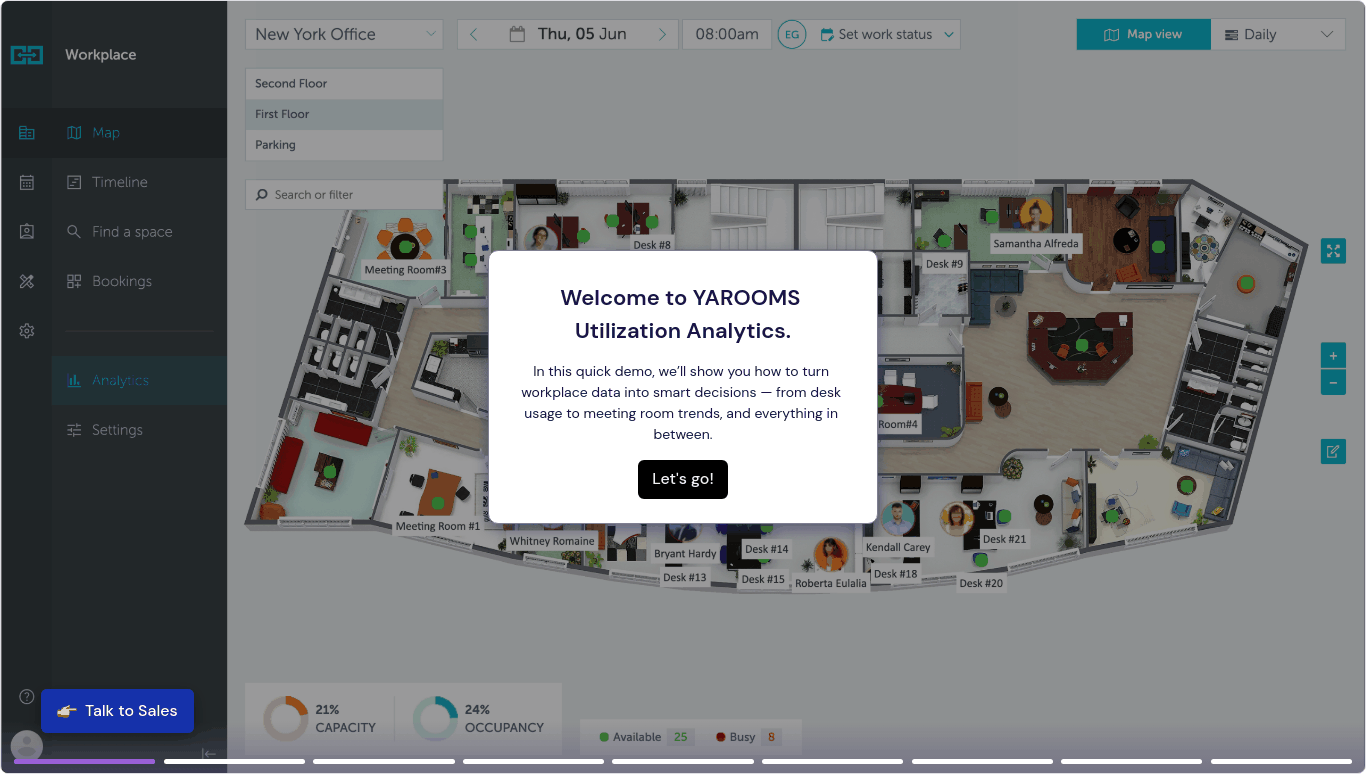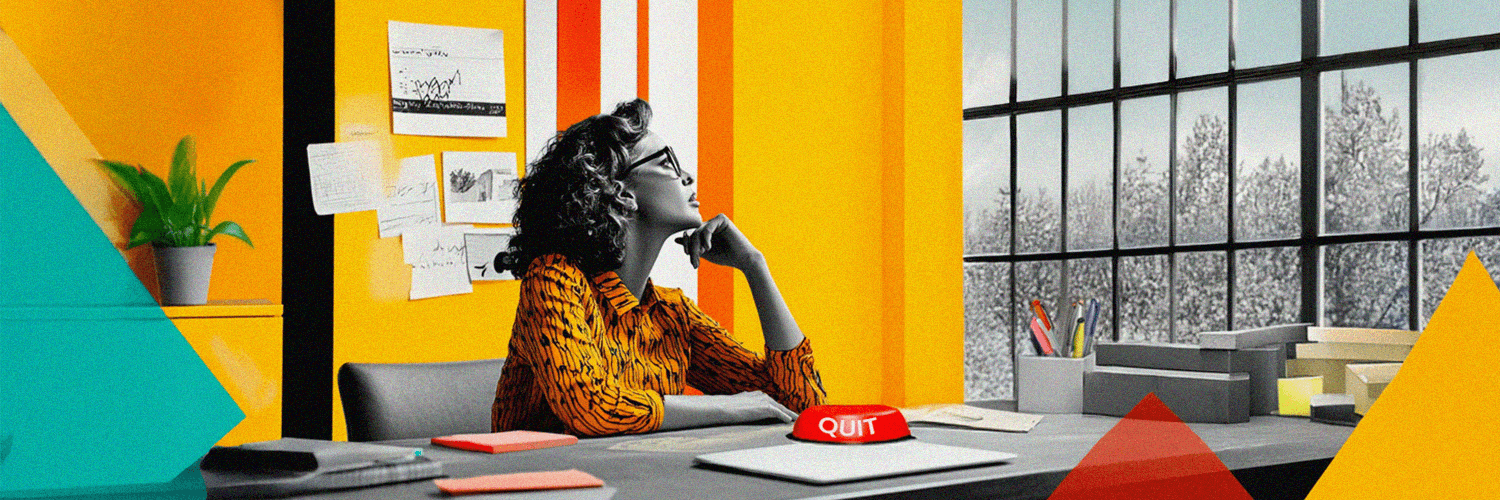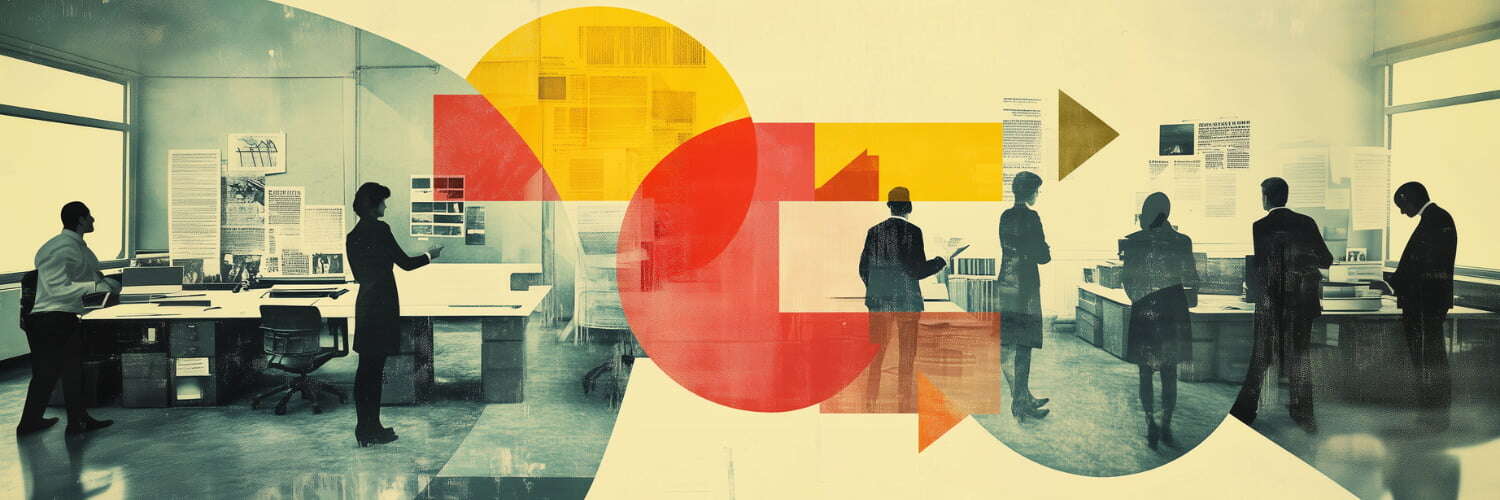[Updated 12 November, 2025]
Every workplace is a mix of unique working styles - a blend of thinkers, planners, collaborators, and creators who all approach work differently. These diverse styles shape how teams communicate, solve problems, and get things done.
Understanding your working style (and those of your teammates) is a way to build better workflows, improve collaboration, and design work environments where everyone performs at their best.
In this article, we’ll explore the six main types of working styles:
You’ll learn what defines each one, where they shine, what challenges they face, and what kind of workspace setup helps each type thrive.
Ready to find out which working style fits you best?
TL;DR: The article defines six primary working styles - Logical, Detail-Oriented, Idea-Oriented, Supportive, Cooperative, and Proximity - explaining that understanding these unique individual approaches to tasks, communication, and problem-solving is crucial for personal growth, career satisfaction, effective team collaboration, and optimizing workspace design.
First Things First: What Is a Working Style?
A working style is the unique way a person approaches their job - how they plan, communicate, solve problems, and collaborate with others. It reflects everything from time management habits to decision-making preferences and team interactions.
In other words, your working style shapes how you organize, prioritize, and execute tasks - whether you thrive on structure, creativity, teamwork, or independence.
Understanding your working style goes beyond knowing what you do at work - it’s about how you do it. Recognizing these patterns helps you identify your strengths, spot areas for improvement, and align your approach with your team’s goals.
When employees and organizations understand and embrace different working styles, collaboration flows more naturally, workflows become more efficient, and people perform at their best in environments that suit them. Research shows that 93% of workers say their productivity depends on how engaging they find their tasks, highlighting the value of aligning work approaches with personal styles. Moreover, recognizing individual strengths can boost productivity by up to 23% - a clear reminder that understanding and leveraging both personal and team working styles isn’t just good for morale, it’s good for business.
Why Should You (and Your Employer) Know Your Working Style?
Understanding your working style helps you work smarter, not harder. It gives you clarity on how you think, make decisions, and collaborate, helping you recognize your strengths, habits, and the conditions where you perform best.
This self-awareness allows you to:
-
Choose job roles that align with your natural preferences,
-
Communicate your needs clearly, and
-
Leverage your strengths while improving on weaker areas.
For employers and team leaders, knowing each person’s working style is just as valuable. It helps them assign tasks that match employees’ abilities, reduce friction between different work approaches, and design office spaces that bring out the best in everyone.
When teams understand how they each work, collaboration becomes smoother, communication improves, and productivity rises. Just like a well-tuned machine, a workplace runs best when every part knows how it operates (and how it fits into the bigger system).
Understanding Different Working Styles
There are six types of working styles, each with unique characteristics and benefits. Let's explore them one by one.
#1: Logical Working Style
People with a logical working style take a structured, analytical approach to problem-solving. They rely on facts, data, and clear reasoning rather than intuition or emotion. Their strength lies in breaking complex challenges into smaller, actionable steps, ensuring every decision is grounded in logic and evidence.
Traits and Characteristics
Logical workers are detail-oriented, precise, and methodical. They enjoy clarity, well-defined processes, and measurable outcomes. These individuals excel at identifying patterns, building efficient workflows, and finding rational solutions to problems.
Potential Weaknesses
While highly reliable and thorough, logical thinkers may struggle in fast-changing or ambiguous environments. Their preference for analysis can sometimes lead to overthinking or decision delays, especially when faced with incomplete data. They may also find it harder to adapt to creative or unstructured settings that lack clear rules.
Best Roles for Professionals With Logical Work Style
-
Engineers designing systems step by step
-
Data analysts interpreting patterns to support business decisions
-
Quality control specialists ensuring standards are met
-
Researchers and scientists following structured methodologies
Optimal Workspace for Logical Thinkers
Logical workers thrive in organized, distraction-free spaces that promote focus. Individual workstations, quiet zones, or enclosed offices support their deep work needs.
Access to digital tools for data visualization, project tracking, and structured collaboration helps them stay efficient.
At the same time, shared meeting areas equipped with interactive displays or analytics dashboards enable logical thinkers to review data with colleagues and solve problems collectively.

#2: Detail-Oriented Working Style
The detail-oriented working style is all about precision, consistency, and thoroughness. People with this approach notice what others might miss - from small discrepancies in data to inconsistencies in design. They take pride in delivering accurate, high-quality work and ensuring every piece of a project fits perfectly.
Traits and Characteristics
Detail-oriented professionals are methodical, observant, and organized. They excel in environments where accuracy and structure are valued and often serve as the team’s “final check.” Their strength lies in spotting errors early, maintaining documentation, and refining ideas until they meet the highest standards.
Potential Weaknesses
Because they care deeply about getting things right, detail-oriented workers may spend too much time perfecting small elements or struggle to delegate. Fast-moving or ambiguous environments can feel uncomfortable, and excessive focus on minutiae may sometimes slow overall progress.
Best Roles for Detailed-Oriented Professionals
-
Editors refining complex reports or marketing copy
-
Accountants who prepare documents like an audit engagement letter sample, verifying financial statements line by line
-
Architects reviewing blueprints for precision
-
Researchers double-checking data integrity before publication
Optimal Workspace for Detail-Oriented Professionals
Detail-focused workers thrive in organized, calm, and well-structured workspaces.
Their ideal setup includes:
-
A dedicated workstation with minimal visual distractions
-
Clear digital file structures and version control tools
-
Quiet zones or focus rooms for deep concentration
-
Whiteboards or digital planning tools for tracking fine-grained project details
In a hybrid office, space management tools that allow them to book consistent, quiet desks or access shared reference areas help maintain their preferred level of order and focus.

#3: Idea-Oriented Working Style
The idea-oriented working style thrives on creativity, imagination, and forward thinking. People with this approach love exploring new possibilities and pushing beyond conventional boundaries. They’re not afraid of the unknown. In fact, that’s where they’re most inspired.
Traits and Characteristics
Idea-oriented professionals are visionary, curious, and inventive. They excel at brainstorming, reimagining old processes, and bringing fresh perspectives to complex problems. Ambiguity doesn’t intimidate them - it fuels their creativity. They’re the spark in any team meeting, constantly suggesting ways to improve, innovate, or reframe challenges.
Potential Weaknesses
Creative energy sometimes comes at the expense of structure. Idea-oriented workers may lose interest in repetitive or detail-heavy tasks and struggle to translate big ideas into practical execution. They can also get carried away by new concepts before fully refining or validating them.
Best Roles for Idea-Oriented Professionals
-
Product designers brainstorming new user experiences
-
Marketers crafting unconventional campaigns
-
Entrepreneurs envisioning new business models
-
Writers and content creators developing unique storylines
Optimal Workspace for Idea-Oriented People
Idea-driven individuals thrive in open, inspiring, and flexible work environments that invite exploration and collaboration.
Their ideal workspace includes:
-
Creative zones, breakout areas, and huddle rooms for brainstorming sessions
-
Whiteboards, digital collaboration tools, or idea walls to visualize thoughts
-
Flexible seating and vibrant decor to stimulate innovation
-
Casual meeting spaces for spontaneous discussions
In hybrid workplaces, giving them access to collaboration rooms or creativity pods through an office booking system helps channel their inspiration into actionable outcomes, ensuring great ideas don’t just stay ideas.

#4: Supportive Working Style
The supportive working style is rooted in empathy, collaboration, and emotional intelligence. People with this style prioritize relationships and team well-being, helping create workplaces where everyone feels heard and valued.
Traits and Characteristics
Supportive professionals are empathetic communicators who build trust and unity across teams. They actively listen, offer help, and nurture positive group dynamics. Whether mentoring peers, facilitating teamwork, or resolving conflicts, they’re often the glue that holds teams together.
Potential Weaknesses
Because supportive individuals aim to maintain harmony, they can struggle with confrontation or fast decision-making. They might avoid tough conversations or hesitate to assert their own opinions if it risks tension.
Best Roles for Supportive-Type People
-
HR specialists fostering engagement and inclusion
-
Team leads who coach and mentor colleagues
-
Counselors and educators supporting individual growth
-
Healthcare professionals balancing empathy with efficiency
Optimal Workspace for Supportive Professionals
Supportive workers thrive in open, inclusive environments that promote connection and trust.
Ideal features include:
-
Open seating areas or shared desks for easy collaboration
-
Comfortable breakout spaces for informal check-ins or mentoring
-
Private pods or quiet rooms for one-on-one conversations
-
Access to digital collaboration platforms that keep communication flowing in hybrid teams

#5: Cooperative Working Style
The cooperative working style centers on teamwork, shared responsibility, and collective problem-solving. People with this style are the ultimate collaborators. They believe success is a team effort and thrive when working toward common goals.
Traits and Characteristics
Cooperative individuals are team-oriented, adaptable, and diplomatic. They value consensus and are quick to find common ground, ensuring everyone’s voice is heard. They excel in group projects and cross-functional teams where coordination and communication are key.
Potential Weaknesses
While great at collaboration, cooperative workers may struggle in situations that demand independent or quick decisions. Their commitment to consensus can slow progress or cause frustration in high-pressure scenarios that require fast action.
Best Roles for Cooperative Individuals
-
Project managers aligning diverse teams
-
Event planners coordinating multiple stakeholders
-
Community organizers balancing many voices
-
Operations leads managing shared workflows
Optimal Workspace for Cooperative-Style Employees
Cooperative professionals thrive in spaces designed for teamwork and open communication.
Their ideal setup includes:
-
Team zones or shared pods for real-time collaboration
-
Interactive meeting rooms with digital whiteboards for brainstorming
-
Transparent layouts that promote visibility and idea exchange
-
Tools for hybrid participation so remote members feel equally included

#6: Proximity Working Style
The proximity working style values face-to-face interaction, physical presence, and the energy that comes from being surrounded by colleagues. These individuals are at their best when they can read body language, share quick ideas, and collaborate in real time.
Traits and Characteristics
Proximity-oriented workers are social, communicative, and people-driven. They thrive on in-person engagement and spontaneous collaboration, making them key culture builders in any office.
Potential Weaknesses
These individuals may find remote or asynchronous work challenging. Virtual communication can feel impersonal to them, and their productivity or motivation might dip without direct, in-person contact.
Best Roles for Employees With Proximity Working Style
-
Sales representatives engaging clients face-to-face
-
Event planners managing live experiences
-
Educators and trainers leading interactive sessions
-
Creative teams brainstorming together in studio spaces
Optimal Workspace for Proximity Professionals
Proximity-driven professionals thrive in dynamic, people-first offices that balance social energy with focus.
The ideal layout includes:
-
Open communal spaces and café-style areas that encourage interaction
-
Team pods for small-group collaboration
-
Flexible meeting rooms equipped with hybrid conferencing tools
-
Hot desking systems that keep teams physically close when planning in-office days
| Working Style | Key Traits | Strengths | Weaknesses | Best-Fit Roles | Optimal Workspace |
|---|---|---|---|---|---|
| Logical | Analytical, structured, data-driven | Excellent at problem-solving, process optimization, and strategic thinking | May overanalyze or resist ambiguity | Engineers, data analysts, programmers, auditors, researchers | Structured and distraction-free environments; quiet zones; organized layouts with access to visual data tools |
| Detail-Oriented | Meticulous, precise, thorough | High accuracy, reliability, and quality control | Can spend too long perfecting details; struggles with delegation | Accountants, editors, QA specialists, architects, researchers | Tidy individual workstations; digital filing systems; focus rooms; clearly labeled storage and project boards |
| Idea-Oriented | Creative, visionary, imaginative | Strong innovation, brainstorming, and concept generation | May overlook feasibility or lose focus on execution | Designers, marketers, entrepreneurs, writers, R&D specialists | Open, flexible layouts; breakout zones; brainstorming areas with whiteboards and collaborative tools |
| Supportive | Empathetic, collaborative, relationship-focused | Builds trust, unity, and positive work culture | May avoid confrontation or struggle with assertiveness | HR specialists, managers, educators, healthcare professionals, counselors | Open collaborative spaces, mentoring areas, and comfortable breakout zones; quiet rooms for private talks |
| Cooperative | Consensus-driven, adaptable, team-oriented | Strong teamwork, coordination, and inclusiveness | May delay action seeking full agreement | Project managers, team leads, community organizers, operations coordinators | Shared team pods; hybrid-ready meeting spaces; interactive whiteboards and connected collaboration areas |
| Proximity | Social, energetic, people-focused | Thrives in live collaboration and quick communication | May struggle with remote work or digital communication | Sales, events, hospitality, education, creative teams | Open communal layouts; hot desks; café zones; flexible meeting spaces supporting face-to-face and hybrid interactions |
6 types of working styles, compared
Technology to Support Different Working Styles
Today’s workplaces are shaped by diverse working styles - and accommodating them is essential for both productivity and inclusion. Modern workplace management platforms with built-in desk and meeting room booking technology make this possible by giving every employee the freedom to work in ways that suit them best.
YAROOMS is one of the best examples of such adaptability in action. With its intuitive room reservation and desk booking capabilities, YAROOMS allows employees to reserve spaces that match their individual work preferences - from quiet, focused desks for logical thinkers to collaborative meeting areas for idea-oriented teams.
Click on the media above and see how YAROOMS desk booking system works
Its interactive floor map adds another layer of personalization. Employees can instantly see available spaces, locate colleagues, and make quick decisions about where to work in real time. For workplace managers, this same view delivers valuable insights into space utilization and team dynamics, helping them design more flexible, data-driven offices.
Click on the media above to explore YAROOMS space utilization report
By combining booking automation, customizable amenities, and real-time visibility, YAROOMS empowers organizations to create adaptable environments where every work style can thrive. The result? A workplace that feels more connected, efficient, and human.
How to Leverage Different Work Styles for Collaboration
Recognizing and embracing diverse working styles is key to building stronger, more collaborative teams. When organizations understand how each style contributes to the bigger picture, they unlock the potential for innovation, efficiency, and trust. Here’s how to make that happen.
Appreciate and Respect Diversity
Every working style brings unique strengths. Some people thrive on structure; others excel in creativity or empathy. Valuing these differences fosters a culture of mutual respect and inclusion, reminding everyone that there isn’t a single “best” way to work - just different approaches leading to the same goal.
Align Tasks with Individual Strengths
Match the right people with the right responsibilities. Assign data-heavy or analytical tasks to logical and detail-oriented thinkers, and tap into idea-oriented and cooperative styles for brainstorming or innovation initiatives. This alignment improves accuracy, motivation, and overall performance.
Build Balanced Teams
A well-rounded team includes a mix of all six working styles — logical, detail-oriented, idea-oriented, supportive, cooperative, and proximity. This diversity ensures projects benefit from analytical precision, creative thinking, and strong interpersonal dynamics. Balanced teams make decisions faster and design better solutions from multiple perspectives.
Foster Transparent Communication
Open, ongoing communication bridges the gap between different work styles. Encourage teammates to share how they prefer to collaborate, give feedback, and stay updated. This clarity minimizes misunderstandings, aligns expectations, and strengthens team cohesion.
Support Growth and Flexibility
Provide training and development opportunities that help employees adapt to different collaboration modes. When team members can flex between work styles - being analytical in one project and creative in another - collaboration becomes more fluid and resilient.
Design Workspaces That Reflect Team Dynamics
Physical space can either empower or inhibit collaboration. Create an adaptive office layout that supports all working styles: quiet zones for focused, logical thinkers, brainstorming areas for creative teams, and shared lounges for supportive and cooperative personalities.
Integrating workspace management tools (like YAROOMS) helps employees choose environments that best match how they work, ensuring comfort, autonomy, and better collaboration overall.
FAQ: Different Types of Working Styles
What Is My Working Style?
Your working style is the unique blend of habits, preferences, and behaviors that define how you get things done. It shapes how you organize tasks, make decisions, collaborate with others, and react to pressure.
To identify your working style, reflect on a few key questions:
-
Do you prefer structure or spontaneity?
-
Do you focus on details or big-picture ideas?
-
Do you work best alone or through collaboration?
-
How do you handle deadlines and feedback?
Answering these honestly helps you pinpoint where you fall among the six main styles - logical, detail-oriented, idea-oriented, supportive, cooperative, or proximity.
Which Is the Best Working Style?
There isn’t one “best” working style - and that’s exactly the point. Each type brings distinct strengths to the table: logical thinkers ensure precision, idea-oriented individuals drive innovation, and supportive collaborators keep teams connected.
The real value lies in understanding your own style and knowing how to flex it depending on the situation. For instance, an idea-oriented employee might practice more structure when managing deadlines, while a logical planner might embrace creative brainstorming when leading new projects.
In healthy, inclusive workplaces, success comes not from uniformity but from diversity in thinking and approach.
Famous People With Different Working Styles
To bring this to life, here are a few well-known figures and the working styles they embody:
| Famous Person | Working Style | How It Shows |
|---|---|---|
| Elon Musk | Logical + Detail-Oriented | Known for analytical problem-solving, deep technical focus, and a relentless commitment to precision in engineering. |
| Steve Jobs | Idea-Oriented | Excelled at visionary thinking and inspiring others through bold, creative concepts. |
| Oprah Winfrey | Supportive | Built an empire rooted in empathy, storytelling, and authentic connection. |
| Satya Nadella | Cooperative | Advocates for empathy and collaboration, transforming Microsoft’s culture into a growth-oriented, team-driven environment. |
| Marie Kondo | Detail-Oriented | Her “spark joy” philosophy demonstrates precision, discipline, and a methodical process applied creatively. |
| Richard Branson | Proximity | Thrives on in-person connection, energy, and trust within his teams - his leadership style reflects openness and physical presence. |













